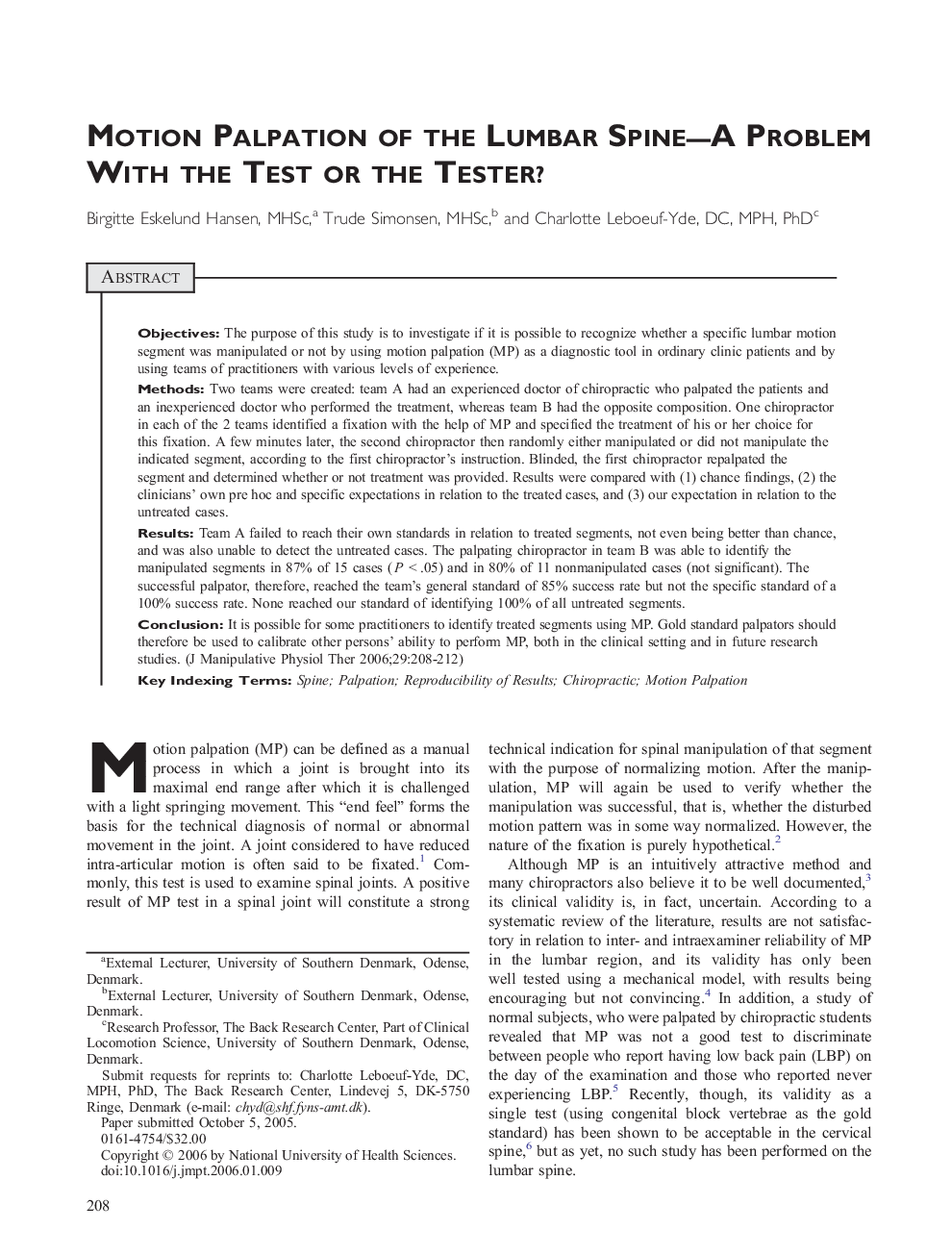| Article ID | Journal | Published Year | Pages | File Type |
|---|---|---|---|---|
| 2621555 | Journal of Manipulative and Physiological Therapeutics | 2006 | 5 Pages |
ObjectivesThe purpose of this study is to investigate if it is possible to recognize whether a specific lumbar motion segment was manipulated or not by using motion palpation (MP) as a diagnostic tool in ordinary clinic patients and by using teams of practitioners with various levels of experience.MethodsTwo teams were created: team A had an experienced doctor of chiropractic who palpated the patients and an inexperienced doctor who performed the treatment, whereas team B had the opposite composition. One chiropractor in each of the 2 teams identified a fixation with the help of MP and specified the treatment of his or her choice for this fixation. A few minutes later, the second chiropractor then randomly either manipulated or did not manipulate the indicated segment, according to the first chiropractor's instruction. Blinded, the first chiropractor repalpated the segment and determined whether or not treatment was provided. Results were compared with (1) chance findings, (2) the clinicians' own pre hoc and specific expectations in relation to the treated cases, and (3) our expectation in relation to the untreated cases.ResultsTeam A failed to reach their own standards in relation to treated segments, not even being better than chance, and was also unable to detect the untreated cases. The palpating chiropractor in team B was able to identify the manipulated segments in 87% of 15 cases (P < .05) and in 80% of 11 nonmanipulated cases (not significant). The successful palpator, therefore, reached the team's general standard of 85% success rate but not the specific standard of a 100% success rate. None reached our standard of identifying 100% of all untreated segments.ConclusionIt is possible for some practitioners to identify treated segments using MP. Gold standard palpators should therefore be used to calibrate other persons' ability to perform MP, both in the clinical setting and in future research studies.
